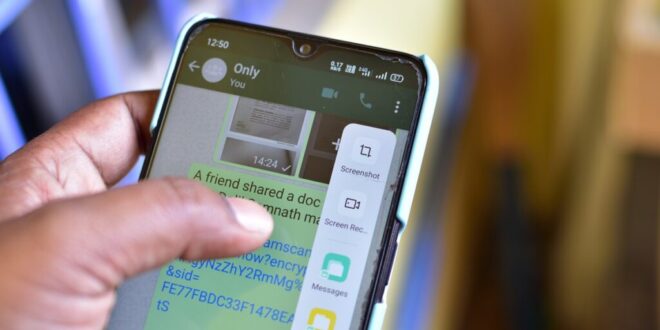Taken a screen shot may seem harmless but keeping sensitive captures in your phone could turn you into a target of cybercriminals.
Credit : Shutterstock
It used to be that downloading apps only from Apple’s App Store or Google Play Store was enough to protect your smartphone. As hackers continue to get more creative, these walled garden solutions are no longer foolproof. Cybersecurity experts have warned about a new type of malware that targets personal screenshots, which many people store without thinking twice.
The rise of ‘stealer’ malware: What’s really at risk?
Not long ago, security firm Kaspersky sounded the alarm about SparkCat, a malware that managed to sneak onto the App Store—something previously thought nearly impossible. SparkKitty is the successor to SparkCat and affects both iPhones AND Android devices. SparkKitty isn’t your average malware: it’s a data ‘stealer’ that goes after photos, screenshots, and pretty much anything you might have saved in your mobile gallery.
Why is that important? It’s important to think about. For convenience, many people take a picture of their passport, ID card, password or recovery key for cryptocurrency wallets. SparkKitty uses a sinister trick to copy these images and send them to cybercriminals. They can then spend as much time as they want to go through your private data. In some cases, it uses character-recognition technology to zero in on recovery phrases for crypto wallets—information that should never be stored digitally.
SparkKitty malware on your Smartphone
How these malware types get on your phone is the most worrying. They can sometimes appear as legitimate apps in official stores. They may also trick you to install them by creating convincing fake websites. Once installed, these programs begin harvesting your photos and uploading them to criminals for them to sort through.
Kaspersky says SparkKitty is a virus that has been around since at least February 20, 24. It was only discovered when it had infected iOS and Android phones. Apple acted quickly to remove infected applications from the App Store. Google has not commented yet, but is expected to take action soon.
Keep safe with these practical steps.
What can you do to safeguard yourself? Delete any sensitive screenshots as soon as possible: This may sound obvious, but it is best to not keep screenshots on your phone of IDs, passwords or documents that are private. If you must keep them, save them on an external encrypted storage device.
Be picky with app permissions: Take a moment to review what access your apps have—especially to your gallery or files. In your device’s settings, you can always revoke the permissions.
Stick to official app stores—but stay cautious: While it’s safer to use the App Store or Play Store, remember that no system is 100% foolproof. Do not download apps off unknown websites, despite the tempting offer.
Don’t get complacent—spread the word: Not everyone is up to speed on these threats. Inform your family and friends, particularly those less tech-savvy about the importance to maintain good digital hygiene.
Essential smartphone security: Be vigilant to stay safe
What is the lesson? Convenience comes at a price. These quick screenshots can make your life easier but, in the wrong hands they could lead to identity theft, fraud or the loss of valuable assets. Hackers are becoming more sophisticated and malware such as SparkKitty is slipping through. A few precautions can save you from a lot of trouble.
 Costa News Spain Breaking News | English News in Spain.
Costa News Spain Breaking News | English News in Spain.





